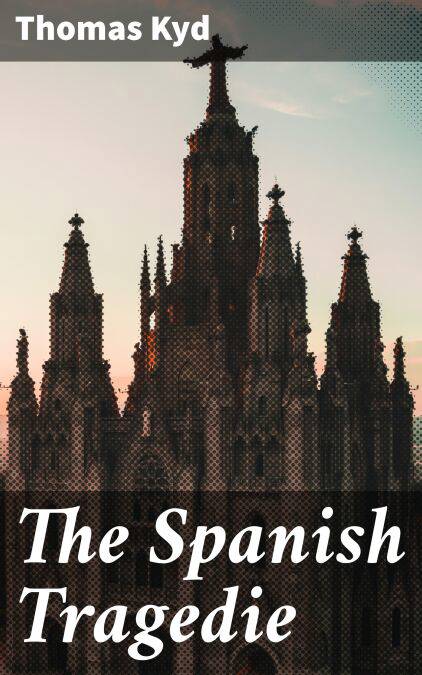
Je cadeautjes zeker op tijd in huis hebben voor de feestdagen? Kom langs in onze winkels en vind het perfecte geschenk!
- Afhalen na 1 uur in een winkel met voorraad
- Gratis thuislevering in België vanaf € 30
- Ruim aanbod met 7 miljoen producten
Je cadeautjes zeker op tijd in huis hebben voor de feestdagen? Kom langs in onze winkels en vind het perfecte geschenk!
- Afhalen na 1 uur in een winkel met voorraad
- Gratis thuislevering in België vanaf € 30
- Ruim aanbod met 7 miljoen producten
Zoeken
The Spanish Tragedie E-BOOK
Exploring Tragedy and Revenge in Elizabethan Drama
Thomas Kyd
E-book | Engels
€ 0,49
Uitvoering
Omschrijving
Thomas Kyd's "The Spanish Tragedie," written in the late 1580s, is a profound exploration of revenge, madness, and the tragic consequences of unchecked ambition. This quintessential example of Elizabethan drama intertwines elements of existential inquiry with a complex narrative structure that showcases Kyd's mastery of blank verse and dramatic tension. Set against a backdrop of political intrigue in Spain, the play presents a rich tapestry of themes, including justice, honor, and mortality, reflecting the period's preoccupation with the human psyche and the often devastating repercussions of personal vendettas within a broader societal context. Kyd, a pioneering figure in English drama, was heavily influenced by the Spanish literature of the time, as well as the burgeoning themes of revenge that permeated the Elizabethan stage. His own tumultuous life and the political unrest of the late 16th century undoubtedly shaped the narrative's heavy themes, making "The Spanish Tragedie" a crucial precursor to later works by influential playwrights, including Shakespeare and Marlowe. Kyd's innovative use of a play-within-a-play structure serves to reflect on the nature of reality and performance, establishing a complex relationship between the audience and the action on stage. This seminal work is highly recommended for readers interested in the evolution of tragedy and the psychological depth of characters in early modern theatre. "The Spanish Tragedie" not only serves as a critical link between classical influences and contemporary dramas but also invites readers to reflect on the darker aspects of human nature, making it a compelling read for scholars and enthusiasts of literary history alike.
Specificaties
Betrokkenen
- Auteur(s):
- Uitgeverij:
Inhoud
- Aantal bladzijden:
- 153
- Taal:
- Engels
Eigenschappen
- Productcode (EAN):
- 4057664647337
- Verschijningsdatum:
- 20/11/2019
- Uitvoering:
- E-book
- Beveiligd met:
- Digital watermarking
- Formaat:
- ePub

Alleen bij Standaard Boekhandel
Beoordelingen
We publiceren alleen reviews die voldoen aan de voorwaarden voor reviews. Bekijk onze voorwaarden voor reviews.









